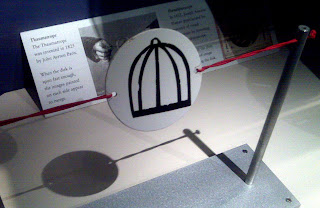The animation begins with an overall view of the environment, a desert perhaps with some trees spread out across the plain (she gives off the illusion of 3D by placing some trees further on the z-axis creating 3D depth in a 2D environment), then three monkeys appear on a branch when suddenly a fourth monkey appears from above on a separate branch. The fourth monkey, who is styled somewhat differently (different color, bigger hair, lop-sided eyes) from the first three monkeys, gives a friendly wave at the three monkeys on the opposite branch. His endearing gesture is met with lively laughter from the three monkeys, then the taunting begins, and the fourth monkey does not understand what is so funny. Then one of the three monkeys takes out a pen and paperbag, draws a happy face on it and throws it over the fourth monkey's head. The clouds roll in from above and the skies become dark and lightening strikes the tree of monkeys. The tree collapses along with the three monkeys, but the lone fourth monkey remains afloat due to the paperbag parachute.
This whole piece was meant to show that in life, there will always be people who put you down for being different, but what goes around comes around and the one who was taunted will one day rise to the top. It was also the inspiration behind her animation website, paperbagparachute.com. My only criticism is that the animation contains no sound, which is somewhat disappointing. I felt that by adding sound, it would have greatly elevated the user's experience and engaged the viewer more.
With that said, I hope you enjoy this piece as much as I did, check it out: http://www.youtube.com/watch?v=TF1tWCdesMw









